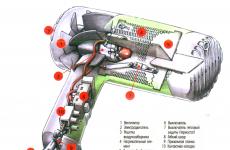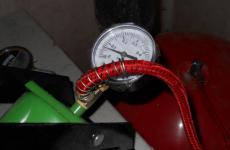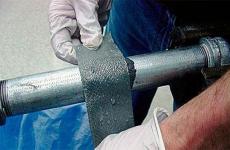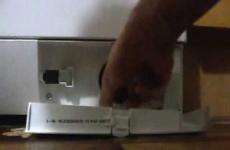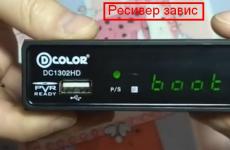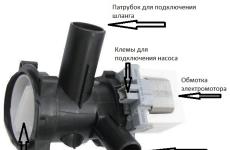Hair dryer repair
The hair dryer operates on a 220 V, 50 Hz network. Any hair dryer has two main parts - a heating element and an electric motor.
As a rule, a nichrome spiral is used as a heating element, it is it that provides warm air. In hair dryers, DC electric motors with a power of up to 50 watts are mainly used, there are exceptions.
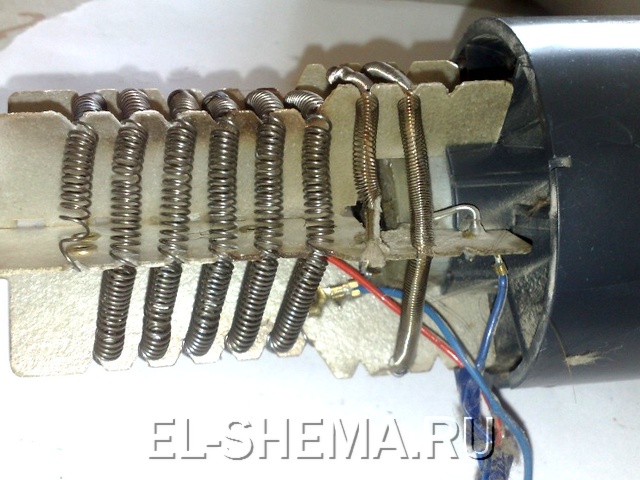
Passing through the spiral, the current loses its initial strength, since the spiral has a certain resistance, it is this current that is rectified by the diode bridge and supplied to the electric motor.
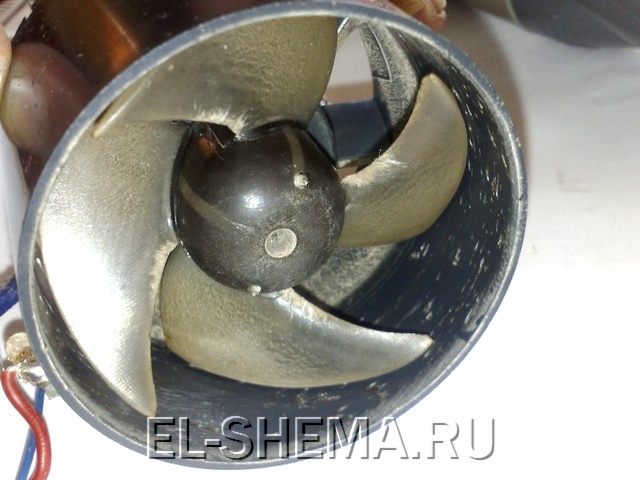
Electric motors in hair dryers are designed for voltages of 12, 24 and 36 Volts, only very rare models use 220 Volt electric motors, in this case, the voltage from the network is directly supplied to the electric motor. A screw (propeller) is attached to the rotor of the engine, which provides heat removal from the spiral, it is thanks to this that a sufficiently strong directed flow of warm air is obtained at the outlet. The power of the hair dryer depends on the thickness of the coil used and the power of the installed electric motor.
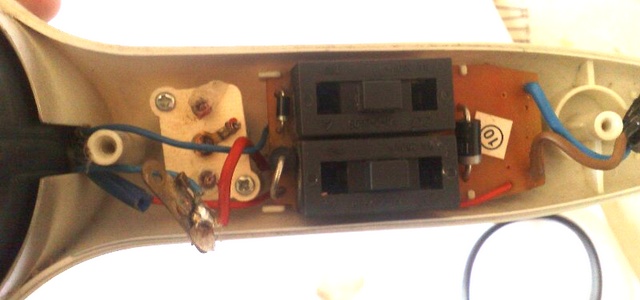
The brought hair dryer was disassembled, it turned out that the problem was a broken track on the board with switches. After filling it with solder, the device started working normally.
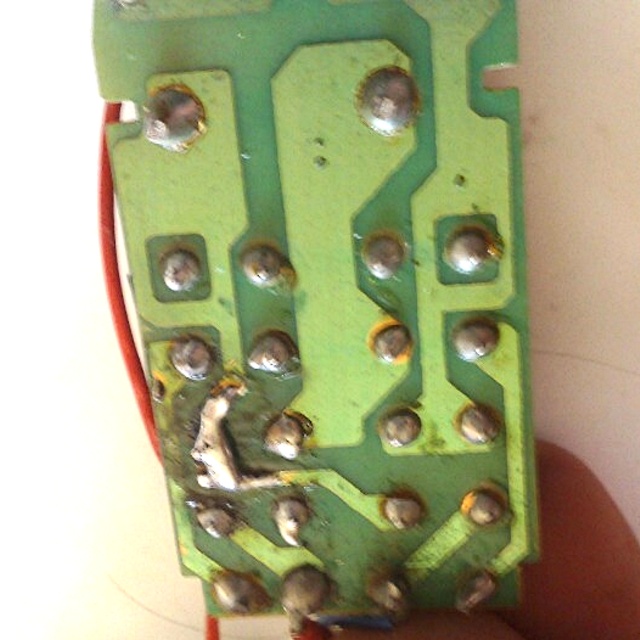
But most often, the main reasons for inoperability are a broken spiral, an inoperative engine, contacts of switches that have melted from heat, a broken mains wire or plug.
![]()
Elements in the diagram: 1 - diffuser nozzle, 2 - body, 3 - air duct, 4 - handle, 5 - cord twist fuse, 6 - "Cold air" mode button, 7 - air flow temperature switch, 8 - flow rate switch air, 9 - "Turbo" mode button - maximum air flow, 10 - loop for hanging a hair dryer.
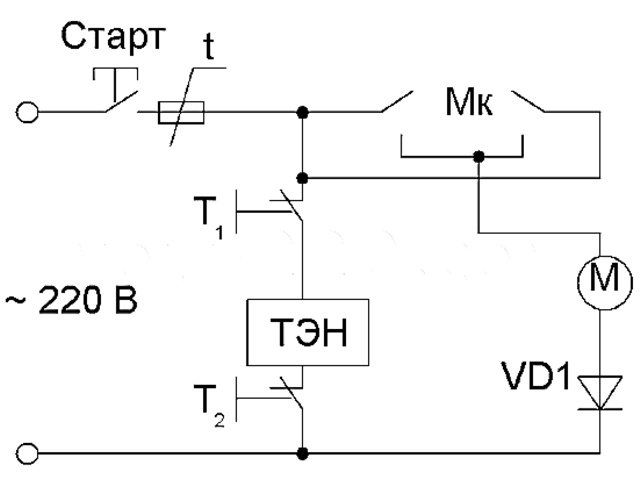
A DC voltage is supplied to the electric motor, obtained by means of a diode bridge consisting of four diodes (or simply from one diode).
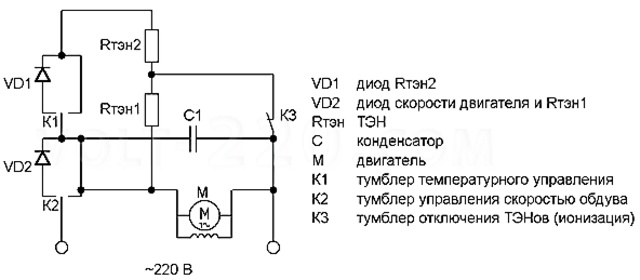
Let us single out two elements of the circuit that are consumers (loads), these are the spiral and the diode bridge (the motor is not counted, since it is the load of the bridge). In the circuit, the elements are located in series (one after the other), which means that the voltage drop across each of them will depend on its resistance and their sum will be equal to the mains voltage at the third position of the switch.
![]()
Most of the entry-level hair dryers have a simple wiring diagram, in such hair dryers there is only one switch, which turns on the fan and heating element. Heaters can be made in various modifications, but in all hair dryers they are made of nichrome coiled into a spring.
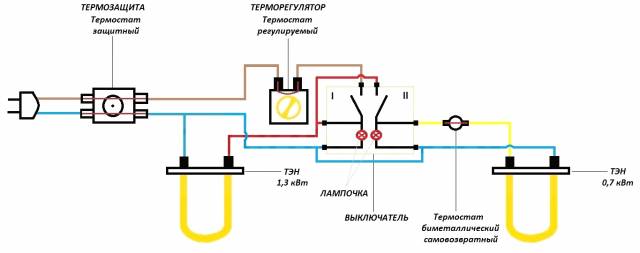
However, almost all simple modern hair dryers have 2-3 steps of power and air flow regulation.
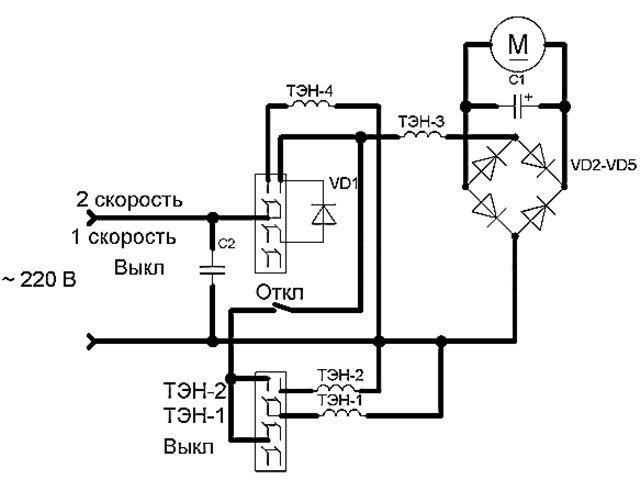
More advanced hair dryers have smooth controls for the airflow speed and air temperature.
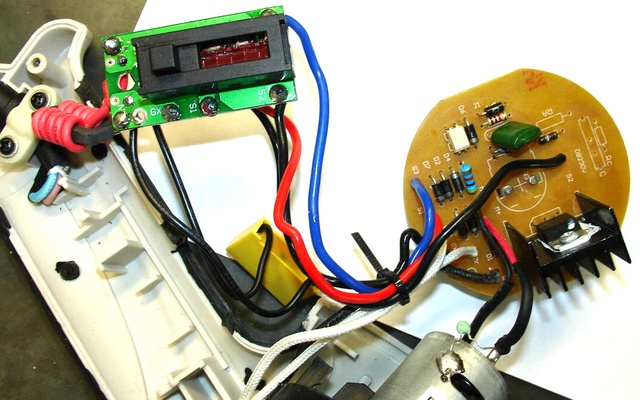
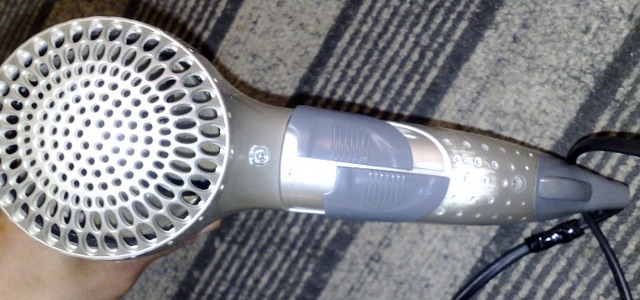
The recommended maximum run time is 5 minutes. At the end of the work, remove the temperature regulator to a minimum, leave it on a cold blower for half a minute, and only then turn off the hair dryer. Try not to take it with wet hands, otherwise moisture may get on the internal elements of the circuit, which can lead to a short circuit.

